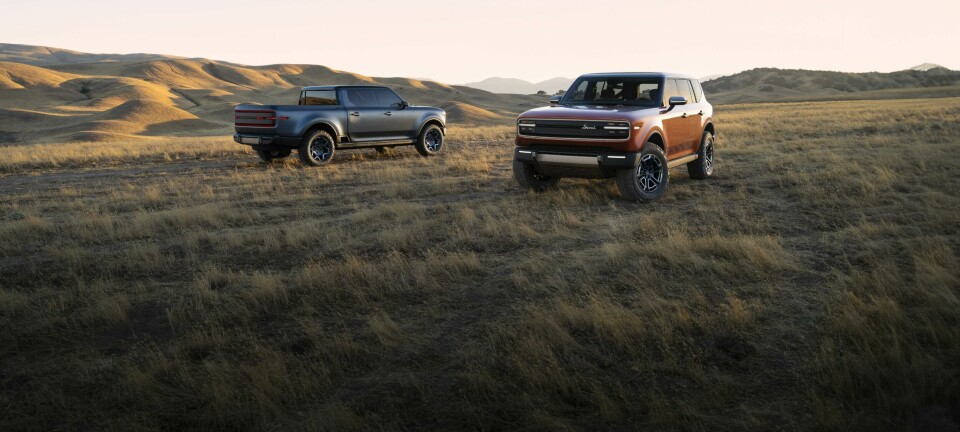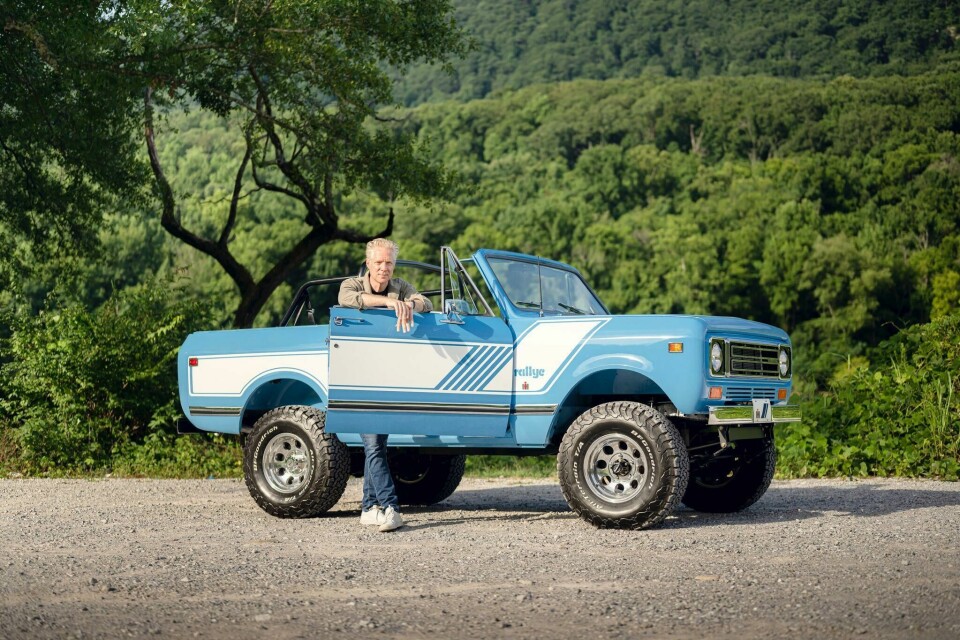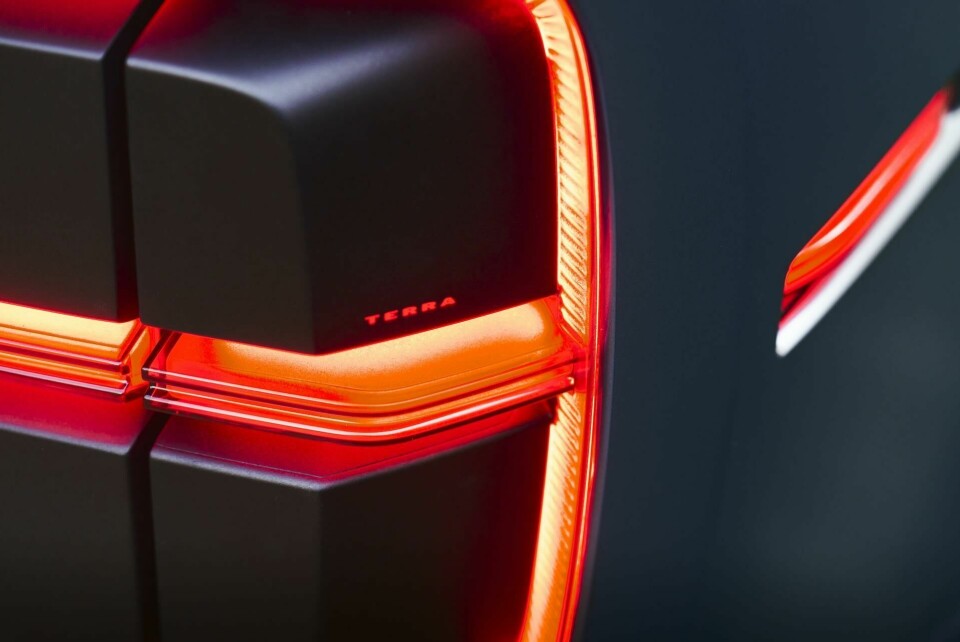
Scout reveals SUV and pick-up concepts in long-awaited debut
Rugged SUV and pickup truck concepts revitalise a storied American brand. Head of design Chris Benjamin gives Laura Burstein the details
Less than two years after former Stellantis designer Chris Benjamin was announced to lead the design studio, VW Group-owned Scout Motors unveiled its first two electric concept vehicles in the wilds outside Nashville, TN. The Traveler SUV and the Terra pickup truck hope to win the hearts (and wallets) of American buyers in two crucial but crowded segments.
What separates Scout from EV startup rivals such as Rivian is the brand’s deep history. Agricultural vehicle manufacturer International Harvester, based in the heartland of the American Midwest, introduced the first International Scout in 1960, a rugged pickup truck whose design was utilitarian but also revolutionary, swapping flat body sides for a more contoured appearance. Through the 1970s and ‘80s, Scout produced multiple variants of its Scout 80 and Scout II models, and along the way built a cult following in the recreational and racing off-roading community.

This legacy both inspired and challenged Benjamin and his team. “We are a startup, but we have heritage, which is unusual in this industry,” he noted before the vehicle reveal. To Benjamin, the approach meant honouring the brand’s past while creating a striking, modern design language that incorporates the new Scout’s technology. “Making a spaceship out of that would be the absolute wrong thing to do,” he said, “and making a retro copy is lazy.”
Benjamin and his team immersed themselves in classic Scout design and culture to develop brand pillars that reflect the past and inform a fresh direction. They aimed for a “bold icon” that could make a statement in design while also being “a helpful companion,” he explained. Drawing from the definition of the word scout, a person who goes ahead and brings back information, they embraced this concept in both vehicle and brand design.
Benjamin explains that proportions were central to creating the new Scout. “If you look at a Scout II, the weight was shifted rearward, with a short front overhang,” he says. This shift inspired the Traveler and Terra, which feature broad shoulders, high ground clearance, and a modern interpretation of the classic Scout silhouette.
I want our success to be like an industry Cinderella story
Rather than adopting the round headlights of past Scouts, the lighting on the Traveler and Terra are modeled after binoculars, a scout’s tool. “We first designed our own binoculars, then used them for the headlamps,” Benjamin said. Horizontal DRLs wrap around each vehicle, “like the equator wraps around the earth,” creating a grounding effect while mimicking old-school side markers.
One unique element is the “ghost lighting” on the front and rear masks, which Benjamin describes as a subtle halo effect that appears only when the vehicle’s lights are on, giving it a modern, ambient glow. “When the lights are off, you wouldn’t know there’s any light there at all,” he explained. The body itself is intentionally clean, with a single deep undercut on the doors and no excessive plastic cladding. “A lot of vehicles these days add matte black everywhere to say, ‘Look, it’s off-road now.’ That’s not what Scout did,” Benjamin said.

Instead, both the Traveler and Terra are full-bodied and durable, with a body-on-frame construction that enhances off-road capability and durability. The platform, by the way, allows for 35-inch tires and over a foot of ground clearance, boosting the vehicles’ ruggedness.
Each model also has unique rear designs: the Traveler features a split tailgate for cargo access, while the Terra includes a 5.5-foot pickup bed.
On the technical side, both include a solid rear axle and advanced four-wheel-drive systems, enabling towing capacities of up to 10,000 pounds for the Terra and more than 7,000 pounds for the Traveler.
The interior is designed with functionality and durability in mind, featuring sustainable materials and a clean, modern instrument panel. “The tactility that we wanted to create is a holistic feeling between the inside and the outside of the vehicle. You want to feel like the space is the same, no matter where you are.” Benjamin points out the bold horizontal line across the top of the IP, inspired by the original Scout II.
“That vehicle also has this very iconic, negative undercut on the instrument panel. It was just almost like a brow, and then it just shears away as it goes down. We wanted to capture that, but then balance it with obviously the inclusion of technology. So you have this clam shell, and then the screen is floating in there, and you can see behind it, which is pretty cool.”
Tactile buttons were carefully chosen, with driver functions on the steering wheel for ease of use, and a multifunctional console that maximises storage. The Terra offers a bench seat for extra versatility, while the Traveler emphasises comfort and storage. Benjamin also points out the analogue compass, another nod to a scout’s toolkit.
Community UX allows users to move content around on the 16.2 inch centre screen
Notably, Scout colour and materials designers used all non-automotive suppliers for their interior trim pieces. Benjamin points out composite hemp “wood” which is typically used for furniture, flooring and cabinetry.
When it came to the user interface, the Scout team wanted to build on the idea of human connection. Dubbed Community UX, the interface allows users to move content around on the 16.2 inch, landscape-oriented centre screen. “It allows you to swap the interface left to right, with a map always in the background,” Benjamin says. “So if you want the passenger or the middle person to be the DJ, you just swipe it over to them.”
It’s no secret that EVs are currently struggling, both in the US and Europe, but Scout is betting on the long game. And while the brand initially planned to launch as an EV-only brand, the company recently did a quick pivot to add petrol-powered range extenders as an option for its production cars, which are expected to boost the range of both models to at least 500 miles.
Scout announced its vehicles will be built in South Carolina, a move perhaps in anticipation of further tariffs on imported vehicles, with this year’s election looming. Pricing for the Traveler SUV is expected to start at US$50,000 with initial production scheduled for 2027. One contentious point was Scout’s announcement that it would sell direct to consumers, bypassing the dealership model, which led to immediate backlash from US-based Volkswagen dealers.
Despite the challenges, Benjamin says he and his team are optimistic. “We have an amazing opportunity. The last Scout that was produced 44 years ago, and the community is still alive and well and thriving today. I want our success to be like an industry Cinderella story. It seems unlikely that the Scout brand, all these years later, would come back and show vehicles. But that’s what the American success story is all about.”












































